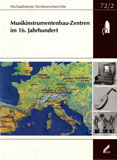 |
How, when and where the specific technological features of the violin family appearedChristian Rault, Michaelstein, 2007. |
Introduction
As a matter of fact the first instruments looking like violins appeared in Italian paintings during the very first decades of the sixteenth century, while – when considering the set of instruments made by Andrea Amati (or at least attributed to him) – the earliest preserved instruments date back probably to its second half.
The sixteenth century Renaissance was a unique period in western history. Paradoxically the whole wealth of this period was generated by its tensions and contradictions in a dreadful state of confusion. The medieval values which allowed the birth and the development of a whole culture and society in Europe from the beginning of the millenium were breaking up: the Church, formerly guarantor of traditional moral values, was losing credibility and power, while kings and princes contended with towns and provinces as dogs do for a piece of meat. In this uncertain atmosphere of continuous wars, poverty took on the dimension of a widespread disaster made worse by religious conflicts and by the omnipresence of the plague known as the “Black Death”. The whole of Europe was reached by this scourge which ravaged equally countries such as Spain, Italy, France, Germany, Flanders and Scandinavia. The underlying ideas of our modern world appeared then and spread in this climate of social and moral decay.
Another fact is quite important for our purpose. In Spain, after the idea of “limpieza del sangre” (literally “blood cleanness”) and the invention, at the very end of the fifteenth century of the Inquisition court, Isabella and Ferdinand decided to expel all the Moors and Jews from Spain. As the Moors took refuge on the southern Mediterranean coast, a large majority of Jews spread into the Spanish kingdoms of Italy or into France, before spilling slowly through the northern countries. This huge movement of population is overlaid by the numerous migrations generated by wars and by flight from epidemics. Political marriages between courts and the arrival in Rome of a Spanish Pope also contributed to making the Renaissance a seething melting pot: everything was changing and people moved as new ideas rapidly gained currency. In such a context, it is not easy to locate any particular innovation, and trying to situate the birthplace of the violin seems as easy as pointing out the first flower at the very beginning of spring.
However, the old medieval conceptions of the world, such as the peculiar relationship between human beings and nature, was going to coexist for a long time beside the new humanism and its innovative aesthetics. We have summarised these two different attitudes as a global and analogical perception of the universe during the Middle Ages, while humanism introduced the analytic concept by considering and studying things independently of their natural context. This superposition of two opposite modes of thought can be observed in all human productions of the time and obviously in the evolution of the architectural conception of stringed instruments. The old vièle[1], like its flamboyant gothic sister the lira da braccio, were carved from a single piece of wood, while the violin was conceived with more than eighty pieces, prepared separately, before being assembled. This transition from one instrument to the other could not have been accomplished by a single craftsman in a single day.
The violin is a very specific instrument. It is easily recognisable through its general outline and through many defined details. Each of these features was made possible thanks to technical innovations or new aesthetics choices and we readily admit that their precise dating and geographical situation would be helpful to our reflections.
During the coming decades we shall be commemorating half a millenium of the violin’s existence. This very long life is a proof of its musical and expressive possibilities, which have made it suitable for so many different styles and aesthetic disruptions. Only one other bowed instrument has been able to survive five hundred years, showing as great a musical wealth and potential for adaptation: the medieval vièle. From the middle of the eleventh century, this instrument was completely defined and when the first violins appeared, the vièle was still in use in the whole of Europe, particularly in Italy. Five hundred years later, the instrument had not gone out of fashion. Inspired artists at the forefront of progress, such as Leonardo da Vinci, Timoteo Viti or Raphael were well known as wonderful singers and improvisers on the lira da braccio: the ultimate stylistic stage of the vièle.[2]
Over many years of study of medieval bowed instruments, I have developed my own rather original approach to this mid-sixteenth century period.[3] Borrowing from the former techniques and aesthetics, I propose to leave aside our contemporary violin makers’ knowledge bases, forgetting all the acknowledged conceptions about construction, internal arrangements or acoustic matters, and I will simply trace the record of the historic evidence. When we observe closely what the documents show us chronogically, admitting every new technical feature only when the proof of its existence is established, some preconceived ideas about the violin can be seriously challenged.
Description of the medieval vièle
First, let us remember what the medieval vièle is, examining its general outlines and its organological features as they appear on twelfth century master carvings[4] such as the Gate of Glory in Santiago de Compostela. This wonderful document conceived and carried out by Master Matteo in 1188 illustrates the Last Judgement. According to Saint John’s Apocalypse, twenty four Elders are presenting various stringed instruments, among which are shown eight oval vièles. As they are carved in various positions, many details can be seen from different angles(see f. e. figure 1).
The extensive multidisciplinary studies made between 1988 and 1994 on this exceptional masterpiece have made possible a lot of very close observations and discoveries (and also numerous instrumental and musical experimentations).[5] The general outline of the body is oval. Its neck, narrow with parallel edges, bears the western flat frontal pegbox where are arranged five tuning pegs. The fingerboard is flat and longer than the neck, so it overhangs the belly for a short distance. Four thin strings run over the fingerboard in two parallel pairs, up to the nut, before penetrating inside the flat pegbox through two “romanesque window”-shaped holes. A thicker string (the drone), very often not parallel, is attached directly to its peg outside the fingerboard and ignores the upper nut, but sometimes, too, it runs over the fingerboard.[6] An almost rectangular tail piece is fastened by a string to a special prominent block projecting out of the ribs in the lower part of the instrument. The bridge is placed in the centre part of the belly between two symmetrically opposite sound holes. Bellies and backs are generally slightly vaulted. Sometimes, the vaulted back shows an angle or a kind of spine in its longitudinal axis. The ribs are not flat as they are on our modern instruments, but are always concave, hollowed out like a Roman roofing tile (figure 1, left).
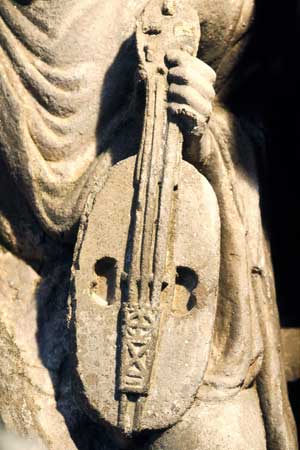 |
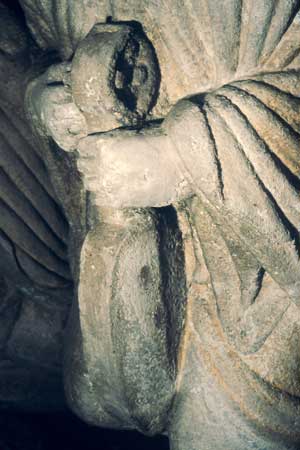 |
From the mid-eleventh century, we find in early pictures[7] the same instrumental arrangements on pear-shaped instruments: two pairs of strings plus an external drone, frontal pegbox, symmetrical sound holes, tail piece, etc. (figure 2).
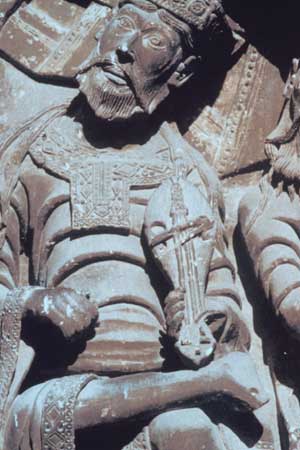
Fig. 2 Pear shaped vièle on the West Door of Moissac (c. 1100)
A medieval rebec?
We have here to open an important parenthesis to point out that, in contrast to such frequently repeated preconceived ideas, the body design of medieval instruments is not relevant enough for any classification or identification. In order to clarify our comprehension of the history and practices of musical instruments, we must first eliminate the imagined existence of the pear-shaped medieval rebec. We have shown elsewhere that no such medieval rebec has ever existed.[8]
If, as it is generally admitted, we recognise that the rebec is a pear-shaped instrument with a rounded back and a sickle-shaped pegbox with transversal pegs, we must remember that all these elements were borrowed from the Arabo-Andalucian raba¯b. We should recall that this very peculiar bowed instrument, still in use today on the southern Mediterranean coast, appeared in Moorish Spain during the midthirteenth century, almost two hundred years after the vièle (figure 3).[9]
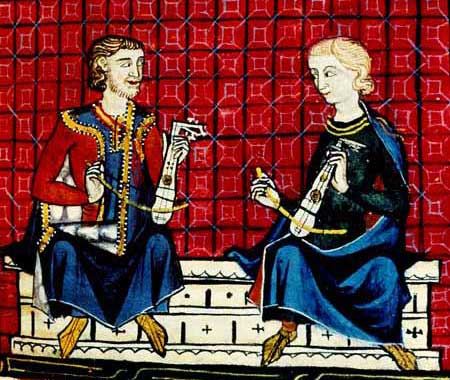
Fig. 3 Arabo-Andalucian rabab in the Cantigas de Santa Maria, Seville 1280–83, Cantiga 110
A few years later in Paris, Jerome of Moravia, compiling the musical knowledge of his time in his Tractatus de musica,[10] dedicated his chapter 28 to a precise description of the well-known vièle but, as a well-informed scholar and connoisseur of Al-Farabi’s Kitab al-musiqi al-kabir,[11] he introduced this chapter with a description of the new Andalusian rabab which he called in Latin “rubeba”.[12]
As a matter of fact, the rubeba would never penetrate the Christian countries beyond the Kingdom of Aragon, including the Balearic Islands, Sardinia, Sicily and the Spanish-owned south of Italy and France.[13] With its oriental fingering with the left hand, avoiding the use of the fingerboard, and its belly made of skin, this profane instrument was ill-suited to the northern Christian musical practices, while the art of the vièle was at the height of its glory. Moreover, it was exactly the time when the only western bowed instrument which had kept, since the arrival of the bow, this primitive left hand eastern technique: the figure eight shaped giga,[14] was falling into disuse, pushed aside, along with the art of Léonin and Pérotin, by the “Ars Nova”.
Most of the earliest iconographical evidence showing the raba¯b in a Christian context (essentially the numerous paintings representing the Madonna and Child with angel musicians from the end of the fourteenth century to the fifteenth), denote by their geographical situation the singular socio-political context of more or less forced conversion of Jews and Moors to Christianity. From then on “Conversos” and “Mudejares” have to honour ostentatiously the true religion, through their music and their instruments (figure 4).

Fig. 4 Madonna and Child with angel musicians, Aragonese school of the mid-15th century (Maricel museum in Sitges)
More often in the iconographical context of praise to the Madonna, the instrument would spread through the north as slowly as its gradual, but radical, changes occurred. Simultaneously with the first literary mention of its name, the word “rebec”,[15] it appeared around 1380 played “da braccio” on the roof of Le Mans Cathedral. For almost the whole of the fifteenth century, it remains still unstable, taking up progressively many features of the vièle – such as the fingerboard, the wooden belly with opposite sound holes or the tail piece – but keeping the original Moorish pear-shaped round back and its more efficient system of pegbox with lateral pegs. Thus, at the very beginning of the sixteenth century, the features of the rebec are definitively fixed. In this way, the rebec is a true Renaissance and pre-Baroque instrument, almost contemporary with the appearance of the violin (figure 5).
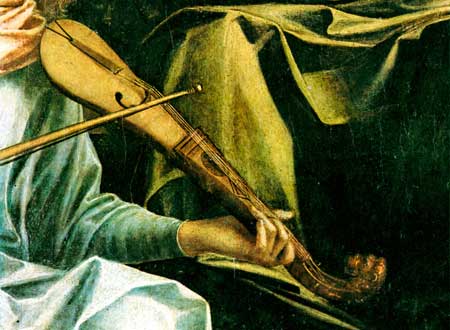
Fig. 5 Giovanni Bellini, Pala di S. Giobbe, 1487 (Galleria della Academia, Venezia)
This chronological evidence did not prevent our predecessors from creating confusion by retrospectively naming all pear-shaped vièles with the later term “rebec” which is an anachronism. In figure 2 above which shows the pear-shaped instrument from Moissac, we can easily recognise all the aforementioned ristics of the vièle: arrangement of the strings, flat pegbox, ribs, etc. The peculiar outline of its body is simply the first shape of the vièle we could call Romanesque. Later, in the middle of the twelfth century, with the new development of the Gothic style, its body increased to became oval, marking a clearer separation of the neck, but this evolution did not in any way alter its definition. Be it pear-shaped, oval or flamboyant, a vièle is still a vièle; as long as its architectural structure and strings settings are respected, the retrospective distinction between different instruments is entirely devoid of any historical or organological significance.
This parenthesis was opened to enable us to understand that, considering the documentary evidence at our disposal up to the present time, the first appearance of the vièle, with all its specificities, dates back to the year 1060 as shown in the Graduel de Nevers.[16] But we should now follow our instrument as far as the first half of the sixteenth century.
The medieval vièle from 1050 to 1550
We have such numerous evidence of the leading role of the vièle in medieval musical practice that it would be out of place in this paper to attempt to retrace all its appearances. One of the main points is to ascertain the permanence of our welldefined instrument through the centuries. Contrary to the general belief that in Middle Ages, far away from any rule, everybody was individually making his own instrument in his own way, an idea implying an incredible variety of shapes, tunings and stringing arrangements, a closer and critical observation[17] of our impressive iconographical corpus seems to indicate just the opposite. Leaving aside the insignificant variations of its body’s outlines, we find exactly the same instrument, as observed in Santiago and described by Jerome of Moravia, in many other places throughout the whole of Christian Europe – Spain, France, Italy, Germany, Flanders and the British Isles – during the twelfth and thirteenth centuries. At the very beginning of the fourteenth century, in France, the use of a second external drone is first attested,[18] while representations of instruments began to become scarce in many parts of Europe, to be strongly concentrated in numerous paintings in Italy during the second half of the fifteenth century, revealing that the instrument had kept the same features since its origins (figure 6).
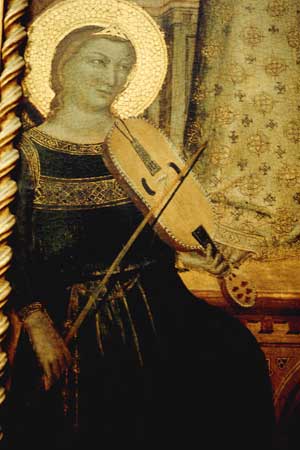
Fig. 6 Vièle (Pinacoteca di Brera, Milan)
At the very beginning of the sixteenth century, a new alteration of its outline commands attention: the appearance of two corners. At the same time the use of seven strings (five on the fingerboard and two external drones) is generalised (figure 7). This is the last stage of evolution of the vièle which we could call late gothic or “flamboyant”. Henceforth, probably as a consequence of humanism and its fascination for antiquity, the instrument would be called the “lira” or “lira da braccio”.
This constancy through time and space is important in the way that it introduces new insights into medieval instrumental practices, as well as into instrument making. From now onwards we have to assume, on the one hand, the presence of well-established instrumental playing techniques; and thus the obligation for any young musician to be bound by the fixed requirements of his instrument. That means a gradual apprenticeship, a pedagogical transmission from a master, still deeply acquainted with the refined aesthetics of the time, to a pupil.
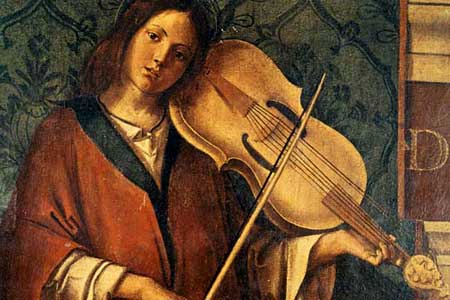
Fig. 7 Bartolommeo Montagna, Madonna in trono e santi, 1500 (Pinacoteca di Brera, Milan)
This constancy through time and space is important in the way that it introduces new insights into medieval instrumental practices, as well as into instrument making. From now onwards we have to assume, on the one hand, the presence of wellestablished instrumental playing techniques; and thus the obligation for any young musician to be bound by the fixed requirements of his instrument. That means a gradual apprenticeship, a pedagogical transmission from a master, still deeply acquainted with the refined aesthetics of the time, to a pupil.
On the other hand, the persistence of a particular instrument through the centuries presupposes the respect for many traditional rules of construction in order to make an instrument able to satisfy the numerous demands of any experienced musician. In the field of instrument making, the necessity of technical transmission seems again to involve the idea of some apprenticeship through specialised workshops and craftsmen and this, probably, earlier than used to be thought.[19]
During our short description of the vièle, we have pointed out the curious feature of the ribs as they appeared on Romanesque and Gothic carvings: always hollowed out along their length like a Roman roofing tile. The permanence of this particular feature seems to denote at least some technical trade transmissions through the centuries. Two instruments preserved since the year 1510 are a lira da braccio built by Andrea da Verona (figure 8) and an anonymous instrument, generally called “viola da braccio”, both instruments in the Kunsthistorisches Museum in ViennaTrennung richtig?(inv. Nos. SAM 89 and SAM 65). As is shown by the first iconographical testimonies of the vièle, these instruments have kept their ribs deeply carved out. Compared with our later instruments such as viols or violins, whose bent ribs are flat, this peculiarity is due to the use of a different, ancient, way of building stringed instruments. For more than five centuries instruments had been either completely carved (back, ribs, neck and pegbox) from a single piece of wood (monoxylous technique), before gluing the belly; or sawn all around their external outline including body, neck and pegbox from a wooden plank as thick as the ribs. Then, the resonating body could be hollowed out with a jig-saw before gluing back and belly (figure 8b).
 |
 |
|
Fig. 8 lira da braccio
built by Andrea da Verona (1510), overall view |
Fig. 8b Detail of the deeply carved rib “crown”
|
As is shown by the preserved instruments, this traditional, five hundred-year-old medieval working process was still in use in Italy during the sixteenth century.[20] In 1511, for Andrea da Verona, three pieces of wood were enough to build an instrument. We are now so close to the appearance of the violin, but so far from its construction, for which more than eighty pieces are necessary. How can we believe that a few decades later Catherine de Médicis, queen of France, ordered a large set of violins, violas, tenors and cellos from an unknown artisan in an unknown Italian borough called Cremona. Eight instruments from this set are actually known to possess all the features of the modern violin. How, when and where did each major transformation occur? And for what musical requirements?
The Iberian contributions
In the Iberian peninsula, the long and close cohabitation, since the eighth century, between Muslims, Jews and Christians had worked in the favour of cultural and technical interferences which reached their height, from the second half of the twelfth century onward, with the translations from Arabic to Latin of the ancient Greek texts. During the thirteenth century, the young Arabo-Andalucian culture adopted from northern practices the use of the bow for its new erudite music through the creation of the new rabab , while Christians, rediscovering the interest for plucking, adopted the primitive monoxylous ‘ûd they called “guittern”, and invented new instruments such as the citole.[21] This was the time when the increasing body of the lute required new construction techniques. Then, little pieces of thin bent wood were glued together to constitute a larger and lighter resonating body, before adding a separate neck.
Some time later in Aragon the medieval vièle, now called “vihuela”, was gradually changing. Its neck became longer and it borrowed the more functional Moorish angled pegbox from the lute and rabab. Another important feature is first seen in Spain between 1430 and 1440: the appearance of the corners.[22] From the last quarter of the same century, we witness simultaneously the enlargement of the instrument (which came to be played “da gamba”) and the use of transversal reinforcements bars for the belly, probably borrowed from the lute.[23] During the last years before 1500 the vihuela was introduced in Italy: not only in Naples, through the Spanish Neapolitan territories, and Rome, thanks to the election of the Spanish Pope Alfonso Borgia, but in the three major Italian powers of Venice, Milan and Florence.
Both iconographical and literary evidence show that the new large “viola alla spagnola” was quickly appreciated in Italian courts. Impressed by a concert given near Milan by Spanish musicians from Rome, Bernardino Prospero, chancellor of Ferrara wrote to Isabella d’Este, in a letter dated 6 March 1493, that the Spanish musicians were playing “viole quasi grande come mi”.[24] Isabella d’Este was at the forefront of innovations. Her long-standing Aragonese connection such as her dynastic alliance with the Borgias, made her able to order three “viole” from a Brescian maestro as early as 1495. In 1496, an inlay showing a viola da mano and a lira da braccio was made for her Grotta in the Ducal Palace, giving us an idea of their look. Again in the Ferrara milieu, in 1497, the painter Lorenzo Costa was creating a Madonna with Child and Saints where two angel musicians are playing “da gamba” two large viols. In these early Italian iconographical testimonies, we can see that both artists have so carefully represented three “viole grande” that we can observe their constructional process through the design of their ribs: each instrument was still built in the old medieval “sawn out” way (figure 9).

Fig. 9 Lorenzo Costa, Madonna with Child and Saints, 1497 (church San Giovanni in Monte, Bologna)
The later orders by the Marchioness of Mantua to the same maker (1499) let us understand that these viols were built in different sizes.[25] We are still at the very beginning of the developments of the consort music. In 1503 the terminology used in correspondence changed, and henceforth bowed viols were referred to as “vyoloni de archetto” or “violoni”, the large size of the instruments now being reflected by the augmentative form of the word “viola”.[26] But if it might be almost easy to saw small instruments up to a tenor size from a single piece of wood, it becomes a real problem for larger ones and, as the fascination for lower sounds was irreversible, makers had to invent (or to adopt) new constructional processes.
Referring to the numerous technical influences between Moors and Christians in Spain as to the close connections between the lute and the vihuela (flat bellies, transversal bars, angled pegbox, for example) we could imagine that, in such a climate of innovation, these new instruments, large in size, were still being built, in Spain, with bent ribs. But we have not met with any certainty on this point. In a painting by Bernardo Zenale decorating the parapet of the organ in Santa Maria di Brera in Milan, finished just before 1508, three angels are playing viols which look very like the later Venetian viols by Erbert, Linarol and the Sicilianos,[27] and it seems very possible that they were still built with bent ribs. But as far as we know, the first evidence for the use of this new technique on bowed instruments appeared a few years later, in an alterpiece painted for the convent of San Giovanni in Monte in Bologna by Raphael, in 1514 (figure 10). In this painting showing Santa Cecilia with other Saints, a broken viola is lying on the ground among other instruments, the cracks on the ribs clearly show the disposition of the grain of the wood. It is also the first appearance of external linings.[28]
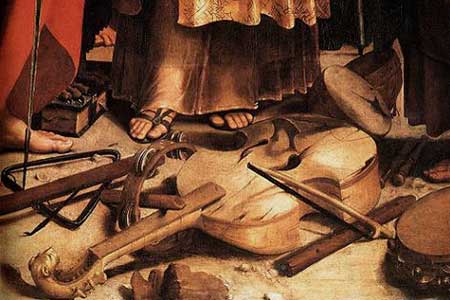
Fig. 10 Raphael, Santa Cecilia, 1514 (Pinacoteca Nazionale, Bologna)
The early violin
Since this latest decisive innovation, (bent ribs and linings) all the technical matters necessary for building a violin seemed to have come together. During the first decades of the sixteenth century, instruments really looking like violins did indeed appear, mostly in the hands of angels in Italian paintings (figure 11).
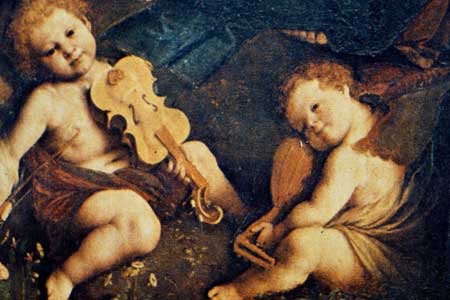
Fig. 11 Gaudenzio Ferrari, Madonna of the Orange Trees, 1529–1530 (Church of San Cristoforo, Vercelli)
A few decades later Andrea Amati built such wonderful instruments that they are still considered as the founding masterpieces of the prestigious Cremonese school. As we know from the State Archives of Cremona,[29] Andrea Amati is first mentioned as a craftsman in 1539, and we can follow some important steps of his life through the notary deeds until his death which occurred in December 1577. But we should now consider the appearance of each technological feature as set out in a summarised chronology (see Appendix). Considering this succession of historical evidence, we cannot fail to note that such an essential element for our modern conception of the violin as the soundpost, seems to appear later than was hitherto believed to be the case.
We have already discussed elsewhere that we have no testimonies to the use of the soundpost in the medieval vièles.[30] The very few early bowed instruments surviving in largely original condition, on the whole corroborate the absence of such an internal reinforcement. The violetta of Santa Catarina de Vigri, usually kept at the Corpus Domini convent in Bologna, beside the body of the Saint (1413–1463), has no soundpost. In the Kunsthistorisches Museum in Vienna are preserved two early bowed instruments built in the sawn-out technique: a lira da braccio by Andrea da Verona c.1511 (figure 8), and the so-called “viola da braccio” (c. 1530); neither was conceived with a soundpost. The same can be said for the last decades of the sixteenth century about all the Venetian viols by the Sicilianos (Linarol or Erbert), built with bent ribs and with flat, bent or carved bellies supported underneath by transverse bars, as with the ancient vihuelas – but without soundpost. The belly of the viol by Zanetto in Brussels is strengthened (as is the viola da braccio from Vienna or the later vihuela in the Encarnación convent in Avila) with a thicker central section of the belly.
The viol from Brescia, by Gasparo da Salo (1575), now in the Ashmoleum Museum, only bears a central spine in its axis. Even from the end of the sixteenth century, the anonymous guitar-shaped viol in the Dolmetsch collection bears this same axial reinforcement, as do other guitar-shaped viols from Brescia. This structural answer to the pressure of strings is still in use in the first half of the seventeenth century as testified by the original front of a small bass violin attributed to Joseph Mayer, in the Berlin Instrumentenmuseum (MIN 5202) and studied by Karel Moens.[31] In my own workshop I have come across an eighteenth century German violin with the same axial spine.
All these early instruments preserved in original condition clearly testify that many experiments to develop sound projection and musical possibilities of both viols and violins were still being carried out at the very end of the sixteenth century. We have to wait until the final decade to meet with certainty, for the first time, clear mention of the use of the soundpost. In London in 1596 William Shakespeare was giving his Romeo and Juliet. Three protagonists of this famous drama are musicians called respectively Rebeck, Catling and … Soundpost. Around the same year (shortly before 1594), real instruments had been put in the hands of music-making angels, sculpted in wood in the burial chapel of Freiberg Cathedral (Saxony). Five bowed instruments from the violin family (small discant, discant, tenor, and bass) had been built in workshops near Freiberg, most of them bearing a central soundpost of a rectangular section, situated between the two upper circles of the f-shaped soundholes.
This was now almost twenty years after Andrea Amati’s death, but considering the necessary time lag between any invention and its documentary expression,[32] this does not mean with certainty that the famous maker did not attempt any kind of acoustical experimentation. Nevertheless serious doubt must exist concerning the presence of an internal system inside the violins made by Andrea that we have now come to expect.
This suspicion that we had already formulated in 1995[33] is confirmed by the instrumentalist Sylvestro Ganassi, who published in Venice in 1542 (that is, three years after the beginning of Andrea’s attested activity) the first volume of his viol tutor Regola Rubertina. In his chapter IX, he suggested, in order to change the pitches of a consort of viols, tuning them “as low as it can still be fingered, and so still audible, lengthening the string by moving the bridge down towards the tailpiece […] in order to lower the pitch […] or moving the bridge up to shorten the strings and thus raise the pitch of the instrument.”[34] Every violonist and every violin maker knows perfectly well how important the precise placement of the bridge is between the “ff” for it to be in the best balance with both the soundpost and bassbar. Being able to move the bridge in such a free way simply means the lack of such an internal arrangement.
The situation of the bridge and internal reinforcements
As most of the earliest preserved instruments, which have been played in the following centuries, were drastically modified, we need iconography to show how they appeared in their historical context.
In the first depictions of vihuelas, or in the earliest Italian pictures of viols and violins, such as the paintings of Il Garofalo (1508–1512),[35] Ludovico Mazzolino (1510 to 1515),[36] Gaudenzio Ferrari (1529–1530),[37] or Lodovico Fiumicelli (1537)[38], we can see the bridges situated very low on the belly, near a short tail piece and generally very far from the central area set between the soundholes.[39] This peculiar situation, similar to the position of the bridges on plucked vihuelas and lutes, makes the introduction and placement of any kind of soundpost impossible. In such a case, there are only two possibilities: either the flat soundboard is supported by transversal bars, as in the lutes and vihuelas of the same period; or, as with the vièles and liras da braccio, the vaulted belly is conceived to sustain the pressure of the bridge by its thickness.
These practices, excluding the presence of any soundpost, continued during the life of Andrea Amati. We can clearly observe how the bridge is situated at a far distance from the centre, below the soundholes, on the Frontispiece of the Treatise by Ganassi (figure 12);[40] also in the portraits of Duiffoprugcar (1562)[41] and of a viol player by Vezzano (1519–1561);[42] as well as in numerous later testimonies during the seventeenth century.[43]

Fig. 12 Sylvestro Ganassi, Regola Rubertina, Venice 1542
The vast iconographical production of these times confirms the still movable position of the bridges up to the eighteenth century.[44] But a noticeable change can be observed in the later pictures of the seventeenth and eighteenth centuries: the varying location of the bridge, not yet stabilised in its modern central place, becoming progressively closer to the soundholes, and very often near their lower end. This evolution very likely indicates the generalisation of the use of the central soundpost, as it limited the movement of the bridge to its sphere of mechanical influence.[45]
As mentioned earlier, we must leave aside our contemporary violin makers’ knowledge and certainties simply to understand that the early polyphonic bowed instruments such as the medieval fiddle, the vihuela, the lira da braccio or the lira da gamba were conceived to be played alone. And the monoxylous conception, without any internal structure and almost flat bridge was perfectly adapted to produce, around a polyphonic musical line, a rainbow of harmonic clouds.[46] When polyphonic effects are created by a consort of instruments of the same frame but built in different sizes and pitches, the role of each instrument becomes completely different, that is to say: monodic, and its conception has to be thought through again. Moroever, the fact of bringing instruments together clearly expresses the search for a greater volume, which is first obtained by a higher tension of the strings. We will probably never know if the soundpost was used a long time before the first mentions of the very end of the sixteenth century, but we have to accept that both its mechanical and acoustical effects perfectly answered the new instrumental requirements, as the consort practice really seems to expand only with the second half of this century.
Hypothesis 1: Andrea Amati, the “pins” and the central soundpost
Some few years ago, colleagues[47] drew my attention to an unexplained hole observable in every violin by Andrea Amati. This hole, of a variable size from about 1 mm to 2.5 mm, is situated in the inside part of the back, on its longitudinal axis, at the height of the upper part of the soundholes (figure 13). This hole, often filled up with glue is not cylindrical but slightly conical (figure 14). It is as deep as the thickness of the back and sometimes goes through the back to be visible from outside as in the later “Conte Vitale” violin (figure 15). We had many discussions together, trying to find some technical explanation for the presence of such a mysterious feature we called a “pin”, making various hypotheses but without arriving at really convincing solutions.
We have already referred to the unexpected discovery of original instruments, almost contemporary with Andrea Amati, in the burial chapel of Freiberg Cathedral. Most of these instruments have a central soundpost. In the “diskant geige” no. 4 (whose length of body is about 340 mm), a kind of small metallic nail is inserted in the lower part of the central soundpost and its point, going beyond the wood, is fitted in a hole of the same frame and situated at the same position as are the “pins” in the inner bottom plates of Andrea’s violins (figure 16).[48]
As we know, Andrea was the founder of a great dynasty of violin makers whose members were remarkably long-lived. His son Girolamo, brother of Antonio, died in 1630, aged 82 years. His own son Nicolò reached the age of 88 in 1684, and Girolamo II, son of Nicolò and exact contemporary of Stradivari died in 1737, aged 91 years.[49] We must believe that each member of the family had received a thorough instruction based on well-established constructional traditions, as the permanency of the same models and constructional techniques during a period of two centuries appears to attest.
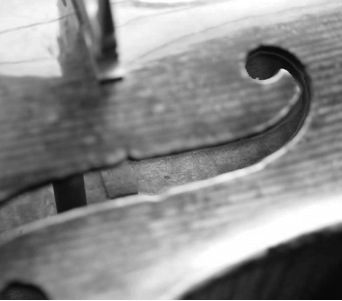 |
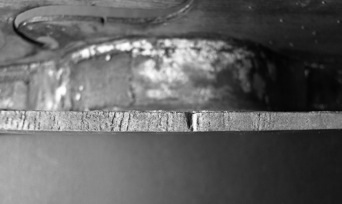 |
| Fig. 13 Violin by Andrea Amati | Fig. 14 Violin by Guiseppe Guarneri del Gesú (1687 to after 1742; private collection) |
 |
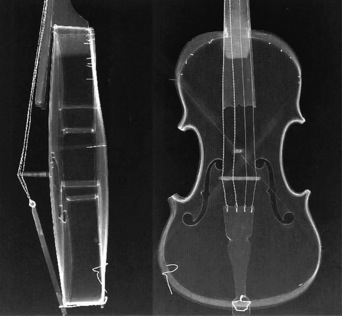 |
| Fig. 15 “Conte Vitale” viola by Andrea Guarneri, 1676 (private collection) |
Fig. 16 X-ray of the diskant geige no. 4 with a single soundpost of rectangular section (Freiberg Cathedral) |
Between 1628 and 1632, plague succeeded by famine devastated northern Italy and the violin corporation was badly hit by the disaster. All the Brescian makers disappeared, but in the city of Cremona, a single member of the Amatis survived, sole heir of a great family tradition. To cope with the ensuing shortage of craftsmen, Nicolo would teach an unusual number of apprentices.[50] As a result, high quality skills and knowledge then spread out from a single source, which fact explains both the wide diffusion of the Amati models and the presence in most Italian violins of this long period of the same “pin” in their inner bottom plates.[51]
A few years later in Paris (1636), Marin Mersenne published his famous Harmonie Universelle. In this impressive treatise, we meet for the first time the clear mention of a movable soundpost in the viols (“un petit bâton que l’on relève par l’ouye quand il est tombé”), asymmetrically situated under the right foot of the bridge. From the Latin version of the same text, we can deduce that this soundpost was of a circular section, but nothing is said about the presence of any kind of bassbar.[52]
Hypothesis 2: Antonio Stradivari and the asymmetrical reinforcements
If, since the founder Andrea Amati, an old tradition of violin making had been transmitted without appreciable changes, things were clearly moving with another very famous violin maker of the Cremonese school: Antonio Stradivari. Compared with the previous permanence, the diversity of Stradivari’s output suggests a rather different frame of mind, revealing the spirit of innovation of a whole society where the musical seeds of the Renaissance finally blossom during the seventeenth century in a flowering of many extraordinary composers and musicians throughout Europe. With the development of the orchestra and the arrival of new musical forms, such as the concerto, instrumental requirements had radically changed. Now soloists were looking for a really powerful and clear monodic voice, with equal volume on a very extended compass.
Basing his work on the Amati models, Stradivari openly attempted to develop the acoustic potential of the violin. Moving away from the old medieval geometrical principles even respected by his colleagues, he first dared to use the metrologic system to modify empirically the shape of its body, surrendering partly the proportional canonical conception transmitted by his predecessors.[53] Looking from the outside, the observable alterations he experimented with on violins are well known. Beginning in 1692 by lengthening the resonating body, an approach he would quickly abandon, he would continue making it broader, while lowering the arching.
Considering the architectural conception from the inside, these new broader and lower plates are only made possible by the use of the definitive solution: the dissymetrical internal structure combining the different physical effects of each former axial reinforcement: the sound post and the lengthwise bar. Both ancient symmetrical systems are now brought together, so ingeniously and harmoniously arranged with the very singular mechanical properties of the vaults carved in quarter cut spruce. The bassbar, almost parallel to the grain of the belly, amplifies the lower frequencies while the soundpost from now onwards, behind the treble foot of the bridge, lends the highest notes a wonderful and powerful tone. This soundpost, being movable, allows each instrument to achieve its optimal balance.
Did Stradivari invent by himself an acoustical system so sophisticated and so efficient that we still use it today? Probably not, but its conception could only be the act of some highly experienced, discerning man of independent ideas, stimulated by innovative music and musicians. Hitherto, what looks to us like an early form of bassbar is attributed to Nicolò Amati who died in 1684.[54] Another one by Andrea Guarneri (d. 1698) is known to be in the the Vermillion collection.[55] But as they have been removed, we do not know for certain if they were situated behind the bass foot of the bridge or in the axis of the belly.
While the “pins” did not appear in Stradivari’s output, they are still observable in the violins of his neighbour and colleague Guarneri del Gesú (see figure 14 above). The new, and so efficient internal arrangement, would be progressively copied by the later violin makers, and these holes would gradually disappear, though probably more slowly than one might imagine. Pending further observations, we would point out an Italian violin of c. 1750 stamped GBG (probably Giovanni Battista Gabrielli, Florence) in the Vermillion collection, bearing the same hole in its back.[56] From 1725, the German baryton no. 228 of the Rosenbaum Family Collection has kept its original square section central soundpost fixed in place with two studs for stability.[57] The numerous high quality paintings of the eighteenth century seem to corroborate, through the still unstable position of the bridge, a slow generalisation of the new system (figure 17).[58]
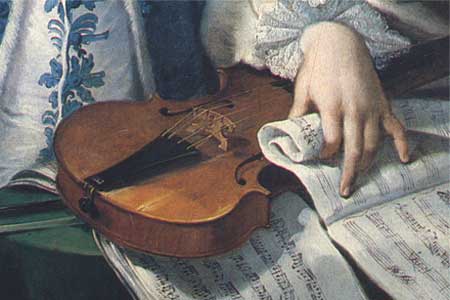
Fig. 17 Anonymous portrait of Pietro Nardini (1722–1793)
Everyone knows the phenomenal prices reached by Italian violins since the nineteenth century. If the violins by Andrea Amati, like those by some who came after, had been conceived with thicker plates and central soundpost, how many of them might have stayed in their original state five hundred years later?
Hypothesis 3: Who was Andrea Amati?
Althought it might appear to go beyond our technical purpose, we would like to propose, by way of a conclusion, an interesting hypothesis about the origins of Andrea Amati. This idea came from a meeting, in 2005, with Ramón Pinto, violin maker from the famous Casa Paramón in Barcelona, who had encountered the mention of an Amat family, owning a tannery near Barcelona during the years 1490–1510. In a later discussion, we learned that his young neighbour on the next floor in Barcelona was called … Andrea Amat!
As no registration of baptisms by parish took place before the Council of Trent (1563), the date and place of birth of the founder of the great Cremonese School are not known, and Andrea’s first appearance in the historical records is found in a notarised deed dated 1539, a contract to rent premises for a period of five years.[59] Since the beginning of our research to track down information about Andrea’s origins, no antecedent, to our knowledge, of the name Amati has been found in the Italian Peninsula. The earliest mentions of this patronymic we have found were in Sardinia, in 1507–1508, when – following Jayme Amat, General Lieutenant of the Kingdom of Aragon, recently appointed as “Viceré Interinale” (Temporary Vice-roy) of the Island – a whole family named Amat settled in Alghero. In fact, the patronymic Amat is of Catalan origin, well documented since the eleventh century.
In 1078, the Council of Gerona, was presided over by a papal legate called Amat. In 1188, Ramón Amat is known to have accompanied King Don Alonsoduring the conquest of Saragossa, initiating the family tree of the “heroic dynasty ofthe illustrious Casa de Amat”. In 1282, Bernardo Amat caught the attention of King Don Pedro during the battle of Bordeaux. Later, in 1421, Ramón Amat was appointed as general adviser of the city of Barcelona, while his brother Francesco Amat was known to be a colonel.[60] Another Amat, Juan Carlos, originated from Monistrol de Montserrat, and had an important treatise Guitarra Española y vandola published in 1596.
In our introduction, we mentioned the enforcement in 1492 of the “blood cleanness” in Spain. An instructive study by Esteve Canyameres i Ramoneda[61] traces one of the numerous consequences of such a clause: “nobiliary falsifications”. Surprisingly, the precise case he describes in his article concerns two families Amat: one from Palou, the other from Sabadell, both villages situated in Catalonia. In 1497, Josep Amat was aspiring to be a canon in the Cathedral of Sevilla. Since, in order to be admitted for this office, he was unable to provide proof of his own “blood cleanness”, he was obliged to falsify some notary deeds to make it appear that he was amember of the other family of the same name.
In 1526, Cremona again came under new overlordship passing from the influence of the French to the German-Spanish domination of the Emperor Charles V. While the city was under siege, in order to recruit new soldiers, a list of men suitableto be enrolled was drawn up. Among the artisans’ names recorded we find mention of a “liuter” called Andrea.[62] The same document notes that Andrea was living near the cathedral in the house of Giovanni Leonardo Martinengo, son of a Jew from a family of wealthy merchants who had converted to Catholicism.
Appendix
Chronology of technical features on western bowed instruments
|
Technical feature
|
Document
|
Where
|
When
|
| Tail piece | Painting[1] | France (Nevers) | 11th century |
| Vaulted back and belly | Sculptures | France / Spain | 12th century (end of) |
| Axial reinforcements | Sculptures / Paintings | France / Spain | 12th century |
| Corners | Painting[2] | Spain (Aragon) | c. 1430 |
| Chin rest | Painting[3] | Italy | 1433 |
| Spruce / maple | Preserved instruments[4] | Italy / Germany | c. 1450 |
| Curved bridges | Painting[5] Text[6] |
Spain (Valencian school) Italy (Napoli?) |
c. 1480 c. 1480–1487 |
| Transversal bars | Painting[7] | Spain (Valencia) | c. 1480 |
| Three strings in fifths | Text[8] | Italy (Napoli?) | 1480–1487 |
| Scroll | Painting[9] | Italy (Bologna) | 1497 |
| Purfling | Preserved instrument[10] | Italy (Verona) | 1510 |
| Scroll and projecting ears | Intarsia[11] | Italy (Vaticano) | 1510–1515 |
| Bent ribs | Text[12] Painting[13] |
Italy (Verona) Italy (Bologna) |
1511 1514 |
| Linings (external) | Painting[14] | Italy (Bologna) | 1514 |
| ff soundholes | Paintings[15] | Italy (Vercelli) | 1529–30 |
| S-shaped pegbox | Preserved instrument[16] | Italy | 1530–1540 |
|
Andrea Amati’s
|
first appearance in the records as a craftsman | 1539 | |
| End button | Painting[17] | Flanders / Spain | 1530–1545 |
| Four-stringed violin | Painting[18] | Italy | 1552 |
| Four strings in fifths | Text[19] | France (Lyon) | 1556 |
| Axial bar beneath the belly | Preserved instrument[20] | Italy (Brescia) | 1575 |
|
Andrea Amati
|
died in | 1577 | |
| Central soundpost | Preserved instruments | Germany (Freiberg/Saxony) | c. 1590 |
| Soundpost | Text[21] | U.K. | 1596 |
| Asymmetrical soundpost | Text[22] | France (Paris) |
1636 |
| Bassbar | Preserved bassbar[23] | Italy (Cremona) | before 1684 |
| Soundpost and bass bar | ? | ? | ? |
[1] Graduel de Nevers, French manuscript, Paris, B.N.F., Lat. 9449, fol. 34v; see Catherine Massip, L’aventure de la musique, Paris 1991, p. 43.
[2] Anonymous, Madonna and Child with angel musicians, Aragonese school, c. 1430 (Museo Provincial de Zaragoza); see Ian Woodfield, The early history of the viol, London 1984, plate 27.
[3] Domenico de Bartolo, Madonna dell’Umiltà, 1433 (Pinacoteca, Sienna); see Enzo Carli, La pittura senese, Firenze 1988, fig. 95–96.
[4] Gittern by Hans Ott in the Wartburg collection in Eisenach, and Violetta de Sa. Catarina de Vigri in the Corpus Domini Convent, Bologna.
[5] Madonna and Child with angel musicians, Maestrazgo school, c. 1480 (San Felíu, Játiva), Barcelona; in: Woodfield, The early history of the viol (see footnote 64), plate 38.
[6] Johannes Tinctoris, De inventione et usu musicae, um 1481 (available in Baines’s English translation): “arculus […], unam tangens, juxta libiitum sonitoris, alias relinquat inconcussas” (“The bow, touching just one [string] as preferred by the player, does not make the other vibrate”). See Anthony Baines, Fifteenth-century Instruments in Johannes Tinctoris’s De inventione et usu musicae, in: Galpin Society Journal 3 (1950), pp. 19–25.
[7] Retable of St. Nicholas in Barcelona, Valencian school (private collection); in: Woodfield, The early history of the viol (see footnote 64), plate 29.
[8] Tinctoris, De inventione et usu musicae (see footnote 68), pp. 19–25.
[9] Lorenzo Costa, Madonna and Child, 1497 (Church of San Giovanni in Monte, Bologna; in: Woodfield, The early history of the viol (see footnote 64), plate 53.
[10] Lira da braccio attributed to Andrea da Verona (Kunsthistorisches Museum, Vienna; see fig. 8).
[11] Woodfield, The early history of the viol (see footnote 64), plate 49, p. 84.
[12] On 20 December 1511, under “music expenses”, payment was made to “Maestro Sebastiano da Verona for the purchase of wood used to make forms for violini”. Luigi Francesco Valdrighi, Nomocheliurgografia antica e moderna, Modena 1884, reprint Bologna 2001, p.254. Modena State Archive, Reg. d’Amm. dei Principi, reg. 782, fol. 79.
[13] Raphael, Santa Cecilia, 1514 (Pinacoteca Nazionale, Bologna; see fig. 10).
[14] Ibid.
[15] Gaudenzio Ferrari, The Madonna of the Orange Trees, 1529–30 (San Cristoforo Church, Vercelli); see Brigitte Geiser, Studien zur Frühgeschichte der Violine, Bern and Stuttgart 1974, fig. 111.
[16] Viol by Francesco Linarol (Kunsthistorisches Museum, Vienna), in: Woodfield, The early history of the viol (see footnote 64), plate 64.
[17] Hans Baldung Grien, Las Tres Gracias (Museo del Prado).
[18] Bernardino Lanino, Madonna and Child Enthroned with Saints and Donors, 1552 (North Carolina Museum of Art).
[19] Philibert Jambe de Fer, Epitome musical, Lyon 1556.
[20] Viol by Gasparo da Salo from 1575 (currently in the Ashmoleum Museum)
[21] William Shakespeare, Romeo and Juliet, 1595.
[22] Marin Mersenne, Harmonie Universelle, Paris 1636, p. 193 (76): “Le chevalet G dont le pied gauche G est soutenu d’un petit bâton que l’on void, et que l’on relève par l’ouye E quand il est tombé.” Latin edition, Paris 1648, p. 47: “G magadem ita refert, ut alba macula in orbem circumducta baculum cruri (cruti) G suppositum, eiusq.”
[23] Bar attributed to Nicolò Amati in: Simone F. Sacconi, I “segreti” di Stradivari, Cremona 1972, fig. 88, p. 96.
Footnotes
[1] As the English term “fiddle” is a generic one, covering many different instruments including the violin, we have preferred in this paper to opt for the French name “vièle”.
[2] See the chapter on Leonardo da Vinci in: Giorgio Vasari, Le Vite de’piu eccellenti pittori, scultori e architetti, Milan 1564, reprint Torriana 1991, Le Vite IV, 18, 28, 29 and 498; and Emanuel Winternitz, Leonardo da Vinci as a Musician, New Haven and London 1982, p. 39.
[3] Christian Rault (ed.), Instruments à cordes du Moyen Age, Bar le Duc 1999, pp. 8–14.
[4] For a more detailed description of the oval fiddle see Francisco Luengo, Instruments à archet dans le nord-ouest de la Péninsule Ibérique, XIIème et XIIIème siècles, and John Wright, L’instrument caché. Réflexions sur la problématique des répliques d’instruments à cordes, in: Christian Rault (ed.), Instruments à cordes du Moyen Age (see footnote 3), pp.115–131 and 133–166. See also Christian Rault, Iconographie et reconstitution, quelques expériences récentes et une illustration: la vièle ovale, in: Les cahiers de musique médiévale, no 2, Paris 1997, pp. 28–41. By the same author, Les modifications structurelles radicales des instruments à cordes au XVIème siècle, in: Pastel (Journal of the Conservatoire Occitan) 21 (1994), pp. 30–36.
[5] Carlos Villanueva (ed.), El Portico de la gloria, musica, arte y pensamiento, Santiago de Compostela 1988. See also José Lopez-Calo (ed.), Los instrumentos del Portico de la Gloria: Su reconstrucción y lamusica de su tiempo, La Corogne 1993, and Lugo 2000.
[6] Both strings arrangements conform to the description given a few decades later by Jerome of Moravia in his Tractatus de musica (13th c.). In his treatise, Jeronymus says that the vièle has, and must have, five strings. Before detailing all the positions for each finger to obtain each note, he describes the three different tunings for the instrument: First tuning, with an external drone: D GG dd, second and third tunings with the drone over the fingerboard: D GG dg and GG D cc These tunings were sometimes reduced for a three stringed instrument.
[7] Capitals from Ste. Foye de Conques, west door of Moissac Cathedral (fig. 2); Graduel de Nevers, MS. Lat. 9449, fol. 34v., from the Bibliothèque Nationale de Paris, among others.
[8] Christian Rault, Du rabâb au rebec, in: Catherine Homo-Lechner and Christian Rault (eds.), Instruments de musique du Maroc et d’al-Andalus (exhibition catalogue), Royaumont 1999, pp. 72–82.
[9] Christian Rault, Instrumentos de arco musulmanos y cristianos, las influencias reciprocas, in: Carlos Villanueva (ed.), El sonido de la piedra, Actas del Encuentro sobre instrumentos en el Camino de Santiago: 9, 10 et 11 septembre 2004, Santiago de Compostela 2005, p. 319, and Christian Poché, Un nouveau regard sur la musique d’al-Andalus: le manuscrit d’al-Tifashi, in: Revista de Musicologia, vol 16/1 (1993): Actas del XV Congresso de la Sociedad Internacional de Musicologia: Culturas musicales del Mediterraneo y sus ramificaciones (Madrid, April, the 3rd to the 10th in 1992.
[10] Jerome of Moravia, Tractatus de musica (see footnote 6).
[11] Literally The Treatise of Music, an impressive work in the great Hellenistic tradition, compiled in Arabic during the 10th century. French translation by Baron Rodolphe d’Erlanger, La musique Arabe, vol. 1, books 1 and 2, Paris 1930.
[12] It is relevant to note the parallel (both in form and content), between the chapter “rabab” by Al-Farabi (see footnote 11, p. 277), and the chapter “rubeba” by Jerome of Moravia, three centuries later. But it is very important to distinguish clearly between the two instruments bearing the same generic name “rabab” in Arabic, but which are completely separate entities. The former is the primitive spike-fiddle from the origins of the bow, the latter is the Arabo-Andalusian rabab with round-back, which inspired the rebec. While the first instrument appeared as early as the beginning of the 10th century, there is no documentary evidence for the latter before the middle of the 13th century.
[13] Ian Woodfield, The early history of the Viol, Cambridge 1984, pp. 15–37.
[14] Christian Rault, Was the giga a Medieval viol?, in: Viola da gamba und viola da braccio. Symposium im Rahmen der 27. Tage Alter Musik in Herne 2002, Mu¨nchen and Salzburg 2006, pp. 23–36; or Christian Rault, La giga: l’autre vièle médiévale?, in: Christine Laloue and Christophe Vendries (eds.), Archéologie et musique, actes du colloque des 9–11 février 2001 (Les cahiers du Musée de la Musiquem, no. 2), Paris 2002, pp. 94–100.
[15] The word “rebecx” is mentioned in 1379 in Jean de Brie, Le Bon Berger (Vrai régime et gouvernement des bergers et bergères) and, simultaneously, the word “rebecam” in Aymeric de Peyrat (d. 1407), Lamentacio cantorum. See Pierre Bec, Vièles ou violes?, Paris 1992, pp. 225–226.
[16] Graduel de Nevers, compiled in 1060, B.N.F. Paris, MS. Lat. 9449, fol. 34 v.
[17] The very realistic character of the well-preserved high quality carvings in Santiago is not unique in medieval iconography. Many other carved or painted masterpieces clearly show the whole organological elements defining the vièle brought together. But, more often than not, musical iconography only represents some of them, with more or less attention and virtuosity. We must never forget that, for the medieval drawer of pictures, as for the carver, the problem was not to represent precisely an object but to convey its meaning. So we have to pay attention and, before any analysis and conclusion, to place every instrumental representation on its correct level of documentary quality.
[18] The first appearance of the second external drone is in an illuminated manuscript from 1304 to 1307. See Bernard Ravenel, Instruments à cordes frottées et pincées d’après les manuscrits médiévaux conservés en Lorraine, in: Rault (ed.), Les instruments à cordes du Moyen Age (see footnote 3), pp.167–183, fig. p. 179. The first literary mention of the 7-stringed vièle can be found in MS. 144, fol. 311r. (c. 1326) from Clairvaux Abbey: see Christian Rault, Iconographie musicale et instruments dans les manuscrits de Troyes, in: Moyen Age en musique (exhibition catalogue), La vie en Champagne, vol. 36, Troyes 2003, pp.13–14.
[19] We have already referred to the constructional complexity of instruments such as the organistrum, the necessity for specialised craftsmen as early as the 12th century. See Christian Rault, L’organistrum ou les origines de la vielle à roue, Paris 1985, p. 147.
[20] Other preserved instruments such as the decorated lira by Francesco Linarol in 1563 (Shrine to Music Museum in Vermillion, inv. no. 4203) or the lirone da braccio built in 1577 by Ventura Linarol (Musikinstrumenten-Museum der Universität Leipzig, inv. no. 780) show to what extent this technique was deeply rooted. As far as the citterns are concerned it stayed in use as late as the 18th century.
[21] Christian Rault, The emergence of new approaches to plucked instruments, thirteenth to fifteenth centuries, in: Gitarre und Zister – Bauweise, Spieltechnik und Geschichte bis 1800 (Michaelsteiner Konferenzberichte, vol. 66), Michaelstein 2004, pp.19–31.
[22] Woodfield, The early History of the Viol (see footnote 13), pp. 44–48.
[23] We know from the drawings by Arnaut de Zwolle (c. 1450) that transversal bars were used for the lute. In a painting of the Valentian school from the late 15th century, a transversal bar is observable through the soundhole of a bowed vihuela. See Woodfield, The early History of the Viol (see footnote 13), fig. 29, p. 49. The same detail was painted later (c. 1515 ) in a bass viol by Matthias Grünewald in his Nativity preserved in the Museum of Unterlinden in Colmar. From the last decades of the 16th century, the preserved Venetian viols by Linarol, Erbert or the Sicilianos, are supported underneath by transversal bars.
[24] “Viols as high as I am”, for the complete quotation see William F. Prizer, Isabella d’Este and Lorenzo de Pavia, Master instrument Maker, in: Studies in Medieval and Early Modern Music, vol. 2, Cambridge 1982, pp. 101–102.
[25] Woodfield, The early History of the Viol (see footnote 13), p. 94.
[26] Ibid., p. 94.
[27] Christophe Coin and Susan Orlando, (eds.), The Italian Viola de Gamba, Torino 2002, plate 10, p. 28.
[28] It is interesting to note that three years before, Raphael was representing a lira da braccio built in the medieval way, in his Parnassus, painted on a ceiling in the Vatican Palace, Rome, 1511. Both constructional techniques were continued alongside each other for a long time. The former medieval process would survive up to the last quarter of the 16th century as attested by preserved instruments (see footnote 20).
[29] Carlo Chiesa, Meet the parent, in: The Strad (2005), p. 25.
[30] Rault, Les modifications des instruments à cordes (see footnote 4), pp. 34–35.
[31] Karel Moens, Der frühe Geigenbau in Süddeutschland, in: Friedemann Hellwig (ed.), Studia organologica, Liber Amicorum for J. H. van der Meer, Tutzing 1987, pp. 349–388, plate 171.
[32] The simultaneous evidence provided by iconographic, literary or archeological testimonies concerning the same matter show that this time allowed is generally quite short, of the order of a few years. See the double entries in the Table (see Appendix): curved bridges – bent ribs – soundpost, as well as the literary mentions of the word “rebec” referred to above, or the appearance of the second drone (footnote 18).
[33] Lecture during the professional violin makers’ annual meeting of ALADFI held in Carry-Le-Rouet, near Marseille, November 24–26th, 1995.
[34] Sylvestro Ganassi, Regola Rubertina, Venice 1542, chapter IX.
[35] Fresco by Il Garofalo, 1508–1512 (Treasure room of Costabili Palace, Ferrara).
[36] Ludovico Mazzolino, Angel Musicians, 1510–1515 (fresco in the Church of Santa Maria della Consolazione, Ferrara).
[37] Gaudenzio Ferrari, The Madonna of the Orange Trees, 1529–1530 (San Cristoforo Church, Vercelli).
[38] Lodovico Fiumicelli, Madonna with Child and Patron Saints of Padua, 1537 (Musei Civici, Padua).
[39] See footnotes 36 to 43.
[40] Frontispiece from Sylvestro Ganassi‘s Regola Rubertina, Venice 1542–1543, in: Coin and Orlando (eds.), The Italian Viola da Gamba (see footnote 27), p. 32.
[41] A portrait of Duiffoprugcar by Woeriot (1562), in: David D. Boyden, The history of violin playing from its origins to 1761, Oxford 1990, plate 9.
[42] Paolo Zacchia di Antonio da Vezzano (1519–1561), Portrait d’un joueur de viole, Lucca, late 16th century, Musée du Louvre, inv. no. M.I. 610, in: Musique, Images, Instruments, no. 5, Paris 2003, p. 214, plate 10.
[43] Leandro Bassano (1557–1622), Les Noces de Cana, Musée du Louvre, inv. no. 431, in: Musique, Images, Instruments, no. 5, Paris 2003, p. 203, plate 2; Bartolommeo Cesi (1556–1629), Bambino suanando la viola, drawing, in: Dominic Gill (ed.), Le Grand livre du violon, Luynes 1984, p. 13; Michelangelo de Caravaggio (1573–1610), Love as Conqueror, in: Boyden, The history of violin playing (see footnote 41), plate 11; engraving of the frontispiece of The Division Violin, London 1685, in: Gill (ed.), Le Grand livre du violon (see footnote 43), p. 79.
[44] Antonio Domenico Gabbiani (1652–1726), Musicisti di Firenze, painting, in: Gill (ed.), Le Grand livre du violon (see footnote 43), p 69, and p. 100 the portrait of Pietro Nardini (1722–1793), p. 105: Paul Joseph Decloche, Concert à la cour de Liège, 1755; Francesco Maria Veracini, engraving of the frontispiece to his Sonate accademiche, op. 2, 1744, in: Boyden, The history of violin playing (see footnote 41), plate 30; frontispiece of the violin method by Leopold Mozart, 1756, in: Gill (ed.), Le Grand livre du violon (see footnote 43), p 94.
[45] Oratio Gentileschi, The lute player, 1565-1640, in: Boyden, The history of violin playing (see footnote 42), plate 8; Sir Peter Lely, Young violonist, 1640, in: Gill (ed.), Le Grand livre du violon (see footnote 44), p. 81, and p. 77: Peter Claez (1597–1640), Vanitas; Gaspar Netscher (1639 to 1684), Lady playing a treble viol, in: Boyden, The history of violin playing (see footnote 42), plate 5.
It is noticeable that in New Spain, the earlier technique without soundpost would survive for a longer time as attested by the numerous representations of bowed instruments from the 16th to the 18th centuries, collected by Evguenia Roubina for her study Los instrumentos de arco en la Nueva España, México 1999, (246 pp.).
[46] It is releavant to note that all the representations of the lira da gamba show the very low situation of the bridges. See: Imke David, Die sechzehn Saiten der italianischen Lira da gamba, Osnabru¨ck 1999.
[47] Particular thanks to my colleagues Patrick Robin, François Denis, Jean-Jacques Fanasht and Alberto Giordano, and to Herbert Heyde of the Metropolitan Museum of Art, New York.
[48] Eszter Fontana, Veit Heller and Steffen Lieberwirth (eds.), Wenn Engel Musizieren. Musikinstrumente von 1594 im Freiberger Dom, Leipzig 2004, p. 83. Absätze vorgezogen
[49] Birth and death dates of the principal members of the family are: Andrea Amati 1505(?)–1577, Girolamo 1548–1630, Nicolo 1596–1684, Girolamo II 1649–1740, compared with 1644(?)–1737 for Antonio Stradivari.
[50] Philip J. Kass, The stati d’anime of S. Faustino in Cremona: tracing the Amati family 1641–1686, in: Journal of the Violin Society of America 12/1 (1992), p. 3 ff.; see: http://www.vsa.to/amati.htm. The list given by Philip J. Kass includes Giacomo Gennaro, Andrea Guarneri, Francesco Mola, Leopoldi Todesca, Gio Batta, the Malagamba brothers, Bartolomeo Pasta, Giovanni Battista Rogeri, Giorgio Taiper, Bartolomeo Cristofori, Giuseppe Segher, Giuseppe Stucchi and Giacomo Railich, but not Francesco Ruggieri or Antonio Stradivari. It is therefore likely that they did not work in Nicolò Amati’s workshop.
[51] The “pin” is found in all the instruments by the Amati family, also in all the instruments by their numerous successors and apprentices, up to Guarneri del Gesú (1698–1744).
[52] Marin Mersenne, Harmonie Universelle, Paris 1636, p. 193 (76): « Le chevalet dont le pied gauche G est soutenu d’un petit bâton que l’on void, et que l’on relève par l’ouye E quand il est tombé. »; and in the Latin edition, Paris 1648, p. 47: “G magadem ita refert, ut alba macula in orbem circumducta baculum cruri (cruti) G suppositum, eiusq.”
[53] François Denis, Traité de Lutherie, English version, Nice 2006, pp. 209–216.
[54] Simone F. Sacconi, I “segreti” di Stradivari, Cremona 1972, fig. 88, p. 96.
[55] Thanks to Patrick Robin for giving me this information.
[56] Particular thanks to Herbert Heyde for giving me this information.
[57] William L. Monical, Shapes of the baroque: the historical development of bowed instruments (exhibition catalogue, Amsterdam Gallery, Library and Museum of the performing Arts at Lincoln Center, 22 March–10 June 1989), Amsterdam 1989, pp. 36–37.
[58] Some examples for paintings: Jérôme Janssens (1624–1693), Bal sur la terrasse d’un palais (Musée des Beaux Arts de Lille) ; Gabbiani, Musicisti di Firenze (see footnote 44). In the frontispiece of the violin method by Leopold Mozart (1756), the bridge is shown in a low position while in the portrait of the Mozart family done in 1780 by Johann Nepomuk della Croce, it is situated in its correct (modern) place; see Gill (ed.), Le grand livre du violon (see footnote 43), pp. 94 and 93. See also Decloche, Concert à la cour de Liège (see footnote 44); Veracini, frontispiece of the Sonate accademiche, op. 2 (see footnote 44); frontispiece of Geminiani‘s L’art du violon (c. 1752) in: Boyden, The history of violin playing (see footnote 41), plate 36.
[59] Chiesa, Meet the parent (see footnote 29), p. 25.
[60] See the family tree of the Amatis at: www.araldicasardegna.org/genealogie/alberi_genealogici/famiglia_amat.htm.
[61] Steve Canyameres i Ramoneda, Las falsificacions nobiliaries: el cas dels Amat de Palou originaris de la vila de Sabadell, www.scgenealogia.org/pdf/amat.
[62] Chiesa, Meet the parent (see footnote 29), p. 25.